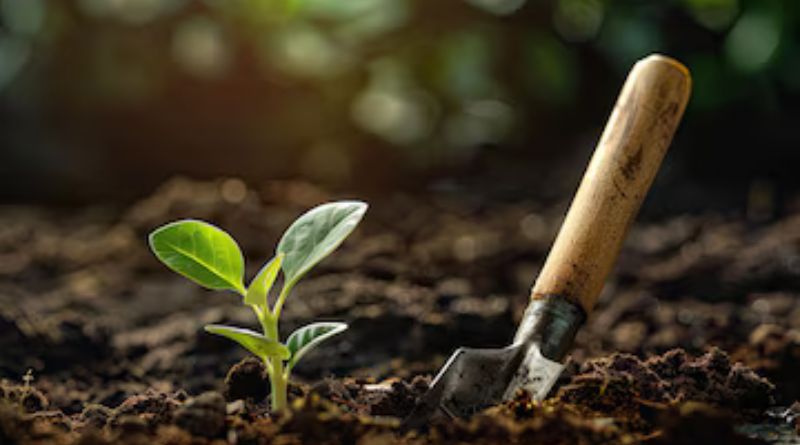If you’re a plant enthusiast or a gardener, you’ve likely come across a plant mister before. While it may seem like a simple tool, a plant mister can play an important role in maintaining the health and beauty of your plants. Whether you’re caring for houseplants, succulents, or even outdoor garden plants, a plant mister is a handy and effective tool for providing the proper moisture and humidity levels that plants need. In this article, we’ll explore what a plant mister is, how it works, why it’s beneficial for plants, and how to use it properly.
Table of Contents
What is a Plant Mister?
A plant mister is a small handheld device used to spray a fine mist of water onto plants. The purpose of the mist is to simulate the natural environment where plants typically receive moisture through rainfall or dew. The mister is designed to distribute water in a gentle, even way that helps plants absorb moisture without over-saturating the soil or leaves.
Most plant misters have a simple design with a spray nozzle and a small tank that holds water. They can be made of various materials, such as plastic, glass, or metal, and come in different sizes and styles to suit different plant care needs. Some models even come with adjustable nozzles, so you can control the spray pattern—whether it’s a fine mist or a more focused spray.
Why Use a Plant Mister?
1. Increasing Humidity for Tropical Plants
Certain plants, especially tropical and humidity-loving species, thrive in environments with high moisture levels. A plant mister helps you create the ideal microclimate around these plants by raising the humidity in the air. For example, ferns, orchids, and certain types of succulents benefit from a regular misting of water, as this replicates the moist conditions of their native environments.
2. Preventing Drying Out
Indoor plants can suffer from dry air, especially during winter months when indoor heating can lower humidity levels. A plant mister provides a simple and efficient way to introduce moisture into the air around your plants, preventing them from drying out and ensuring they remain healthy.
3. Gentle Watering for Sensitive Plants
Some plants, such as young seedlings or plants with delicate leaves, can be damaged by the pressure of a regular watering can. A plant mister offers a more gentle alternative, as the fine mist ensures the leaves are evenly moistened without being weighed down by excess water. This is particularly important for delicate plants like begonias and African violets, which can suffer from root rot if watered too heavily.
4. Pest Control
In addition to keeping plants hydrated, a plant mister can also be useful for pest control. For example, you can fill your mister with a mild insecticidal soap or neem oil solution to help keep pests like aphids, spider mites, and mealybugs at bay. The gentle mist helps distribute the solution over the plant’s surface, ensuring a safe and effective application.
5. Leaf Cleaning
Dust can accumulate on the leaves of your plants, making it harder for them to photosynthesize efficiently. Regularly misting the leaves with water helps to wash away dust and debris, allowing your plants to better absorb sunlight and thrive. A plant mister can also help clean plants with large, glossy leaves like peace lilies or rubber plants.
How to Use a Plant Mister
Using a plant mister is simple, but there are a few key steps to follow to ensure you’re using it correctly and safely for your plants:
1. Choose the Right Water
When using a plant mister, it’s essential to use clean, fresh water. If you’re using tap water, make sure it’s not too hard or filled with chemicals like chlorine or fluoride, which can harm some plants over time. Distilled or rainwater is an excellent option for most plants, as it’s free of impurities. If your tap water is hard, consider using filtered water in your plant mister to avoid mineral buildup on the leaves.
2. Mist the Leaves, Not the Soil
When misting your plants, focus on spraying the leaves and stems, rather than the soil. The goal is to increase humidity and prevent the leaves from drying out. Over-wetting the soil can lead to root rot, especially in plants with sensitive root systems. Hold the plant mister several inches away from the plant and spray evenly, making sure not to saturate the leaves.
3. Timing and Frequency
The frequency with which you mist your plants depends on the humidity levels in your environment and the specific needs of your plants. Tropical plants may require misting once or twice a day, especially during dry weather, while other plants may only need misting a few times a week. It’s important not to overdo it, as excessive moisture can promote fungal growth. If you’re unsure, it’s better to mist less frequently than too often.
4. Avoid Direct Sunlight After Misting
After misting, avoid placing your plants in direct sunlight for an extended period, as the moisture droplets on the leaves can act like magnifying glasses, burning the delicate leaf tissue. Ideally, you should mist your plants in the early morning or late afternoon when sunlight is less intense.
5. Clean Your Plant Mister Regularly
To avoid the buildup of mineral deposits, mold, or bacteria in your plant mister, clean it regularly. Empty the tank after each use and wash the parts with warm water and mild soap. Occasionally, you can disinfect the mister with a mixture of water and vinegar or bleach to keep it in good working condition.
Choosing the Right Plant Mister
There are several factors to consider when choosing a plant mister that suits your needs:
- Capacity: Consider how large your plant collection is. A smaller mister may be sufficient for a few houseplants, but larger plant collections or outdoor gardens may require a larger tank.
- Material: Plant misters come in a variety of materials such as plastic, glass, and metal. Plastic misters are lightweight and inexpensive, but glass or metal models often have a more elegant look and are more durable.
- Spray Function: Some plant misters come with adjustable nozzles that allow you to switch between different spray patterns, from a fine mist to a more focused spray. Choose one that fits your plant care style and the types of plants you have.
- Ergonomics: If you plan to use your plant mister frequently, look for a model that’s comfortable to hold and easy to pump. Some misters are designed with ergonomics in mind, making them less strenuous to use.
Common Problems with Plant Misters
While plant misters are generally easy to use, there are a few common problems that gardeners may encounter:
- Clogging: If the nozzle or pump becomes clogged, it can be frustrating to use the mister. This is usually caused by hard water or mineral deposits. Regular cleaning will help prevent this issue.
- Over-wetting: If you use too much water or mist too frequently, it can lead to waterlogged soil or promote fungal diseases like powdery mildew. Always check the moisture level of the soil before misting.
- Leaking: If your mister leaks, it may have a loose seal or damaged parts. Regularly inspect the device for any wear and tear and replace any damaged components.
Frequently Asked Questions About Plant Misters
1. Can I use a plant mister on all types of plants?
Most plants can benefit from a plant mister, especially those that thrive in high humidity, such as tropical plants, ferns, and orchids. However, avoid misting succulents and cacti, as they prefer dry conditions and could develop rot from excessive moisture.
2. How often should I mist my plants?
The frequency depends on the plant species and environmental conditions. Tropical plants may need misting once or twice a day, while other plants may require misting only a few times per week. Monitor the humidity around your plants to determine their needs.
3. Can I add anything to the water in my plant mister?
You can add a diluted solution of insecticidal soap or neem oil to help control pests, but avoid using fertilizers or harsh chemicals, as they can damage the leaves. Always test any solution on a small section of the plant before applying it to the entire plant.
4. What’s the best time to use a plant mister?
The best time to mist your plants is early in the morning or late in the afternoon when the sunlight is not as intense. This helps avoid the risk of leaf burns due to water droplets magnifying the sun’s rays.
5. How do I clean my plant mister?
To clean your plant mister, empty any leftover water, then wash it with warm soapy water. Occasionally disinfect it with a water-vinegar or water-bleach solution to prevent mold and mineral buildup.
Conclusion
A plant mister is a simple but effective tool for maintaining the health and vitality of your plants, especially those that thrive in humid environments. By using a plant mister regularly, you can ensure your plants receive the right amount of moisture, improve humidity levels, prevent pests, and promote healthy growth. Whether you’re a beginner or an experienced gardener, a plant mister is a must-have for your gardening toolkit.






